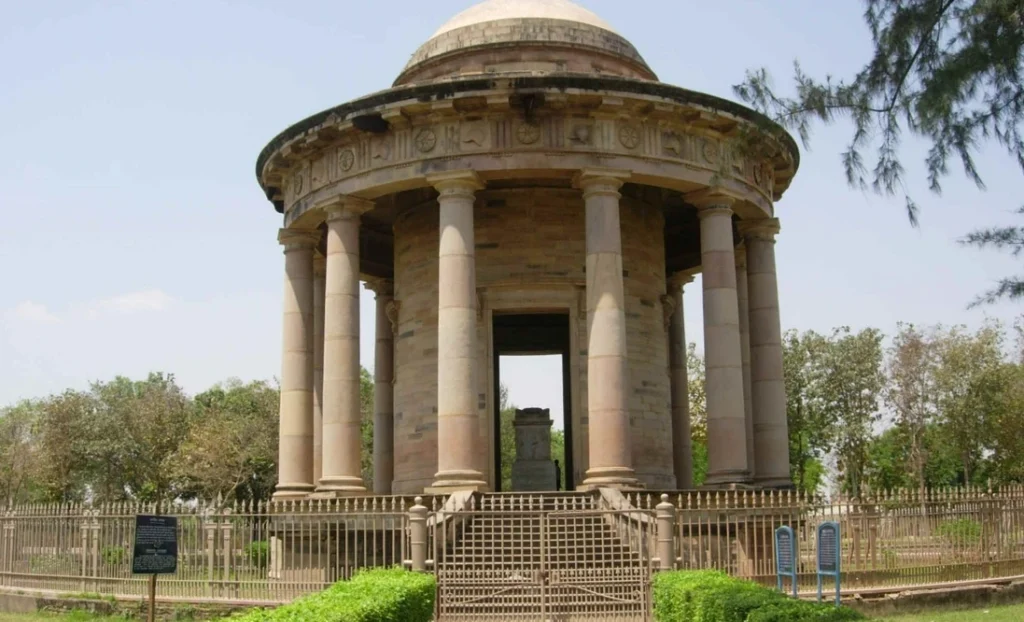Discover Ghazipur, Uttar Pradesh – a land of rich history, valor, spiritual sites, and cultural heritage. Explore its timeless charm and historical legacy!

Explore Ghazipur: Where History, Culture & Legacy Thrive!
Ghazipur district, located in the eastern part of Uttar Pradesh, India, is a region rich in history, culture, and natural beauty. With a total area of approximately 3,378 square kilometers, the district encompasses a diverse range of landscapes, from fertile plains to the meandering banks of the River Ganges.
The district’s history dates back to ancient times, with evidence of its significance found in various historical texts and archaeological sites. The city of Ghazipur, its administrative headquarters, has roots that trace back to the 14th century. Over the centuries, Ghazipur has witnessed the rise and fall of empires, leaving behind a tapestry of architectural wonders, including forts, mausoleums, and temples, which stand as a testament to its past glory.
Agriculture is the backbone of Ghazipur’s economy, with fertile soil and a favorable climate supporting the cultivation of crops like rice, wheat, sugarcane, and fruits. The district’s importance as an agricultural hub is further highlighted by the Ghazipur Mandi, one of the largest and oldest grain markets in the region. The Mandi plays a vital role in connecting farmers with markets and ensuring food security.
The district’s cultural heritage is a vibrant blend of traditions, languages, and art forms. Bhojpuri, a widely spoken language, is an integral part of the local identity. The region’s folk music, often accompanied by traditional instruments, narrates tales of love, struggle, and everyday life. The district’s religious diversity is visible in the numerous temples, mosques, and shrines that dot the landscape, drawing pilgrims and tourists alike.
Ghazipur is also known for its natural beauty. The Ganges River, flowing along its eastern border, not only provides sustenance but also acts as a spiritual and recreational hub. The revered Chhath Puja, a Hindu festival dedicated to the Sun God, witnesses devotees gathering along the riverbanks to offer prayers and offerings. Additionally, the Ghazipur Ghat attracts visitors who seek solace in its tranquil environment.
In recent years, the district has seen efforts towards modernization and development. Infrastructure projects, educational institutions, and healthcare facilities have gradually improved the quality of life for residents. The connectivity provided by road and rail networks has enhanced accessibility and trade, fostering economic growth.
However, Ghazipur also faces challenges such as unemployment, inadequate healthcare access in rural areas, and environmental degradation. Addressing these issues requires a holistic approach, focusing on sustainable development and empowering local communities.
Famous Places in Ghazipur district
Ghazipur district in Uttar Pradesh, India, is home to several famous and historically significant places that offer a glimpse into its rich heritage. Some of the notable attractions include:
Ghazipur Fort: This historic fort, built in the 18th century, is a prominent landmark in the region. It boasts impressive architecture and served as a strategic military post during its heyday.
Chandrakanta Park: Named after the famous Hindi novel “Chandrakanta,” this park is a popular recreational spot for locals and visitors. It features lush greenery, walking paths, and a serene environment.
Aamkhas Bagh: A beautiful garden complex that dates back to the Mughal era, Aamkhas Bagh is known for its intricate architecture, fountains, and well-maintained lawns.
Raja Beni Madhav Ka Bagh: This historic garden was built by Raja Beni Madhav Singh in the 19th century. It showcases Mughal and Persian architectural elements, with fountains and pavilions adorning the landscape.
Sadan Singh ka Bagh: This picturesque garden was constructed during the reign of Nawab Sadan Singh. It’s a popular spot for relaxation and picnics, offering a serene escape from the hustle and bustle of daily life.
Shiva Temple, Sarnath: Located in the town of Sarnath within Ghazipur district, this temple is dedicated to Lord Shiva and holds religious significance. The intricate carvings and spiritual ambiance make it a must-visit for devotees and tourists.
Chhinnamasta Temple: Situated in Rajapur, this temple is dedicated to the fierce goddess Chhinnamasta. It attracts pilgrims seeking blessings and spiritual experiences.
Kuchela Ashram: Linked to the legendary tale of Lord Krishna and his childhood friend Kuchela, this ashram is a pilgrimage site for devotees. It’s believed to be the spot where Kuchela received Krishna’s blessings.
Ghazipur Ghat: Along the banks of the Ganges River, Ghazipur Ghat is a place of spiritual significance and a site for rituals and ceremonies. The serene ambiance draws both locals and visitors.
Rani Sati Mandir: A revered temple dedicated to the goddess Rani Sati, this site sees a steady stream of devotees seeking her blessings and protection.
These famous places in Ghazipur district provide a blend of historical, cultural, and religious experiences, offering visitors a chance to immerse themselves in the region’s rich heritage and spirituality.
Read More :-
